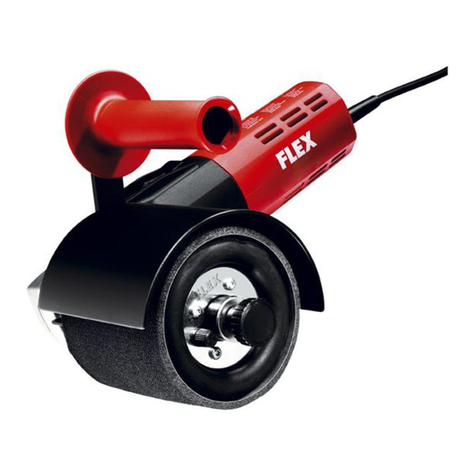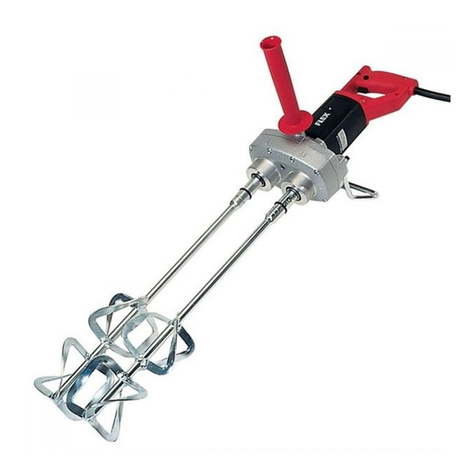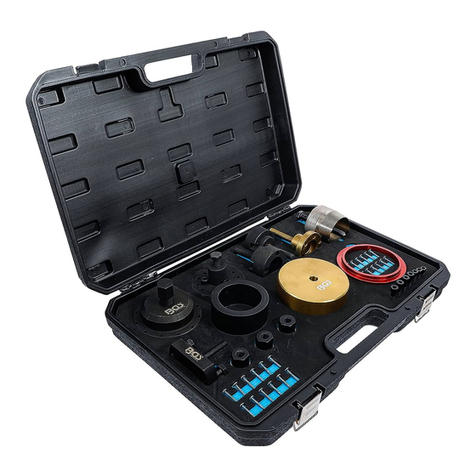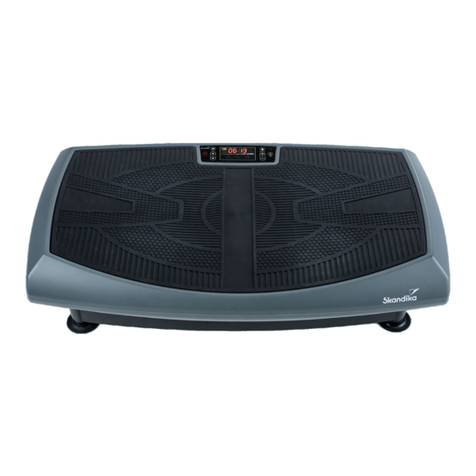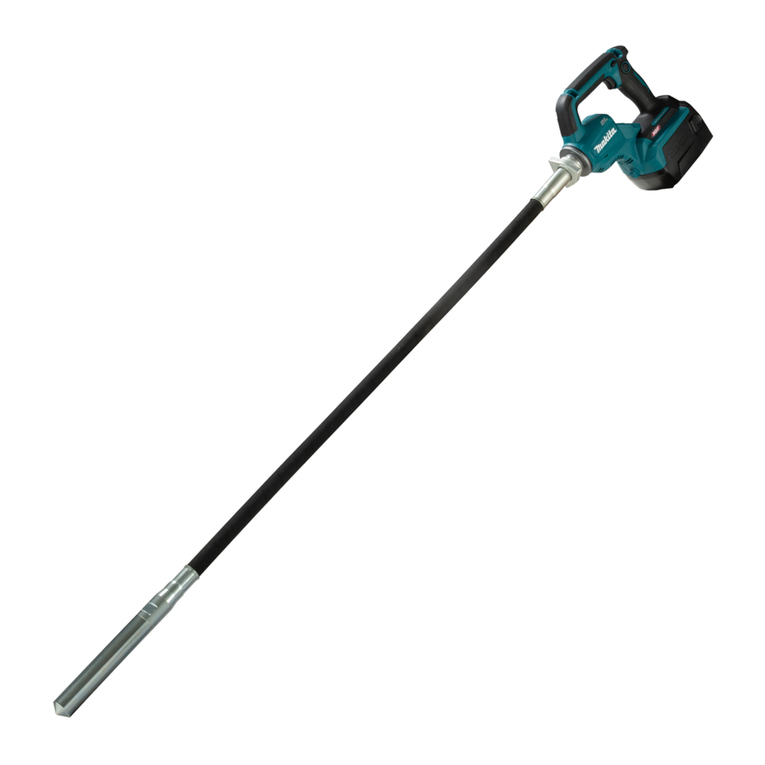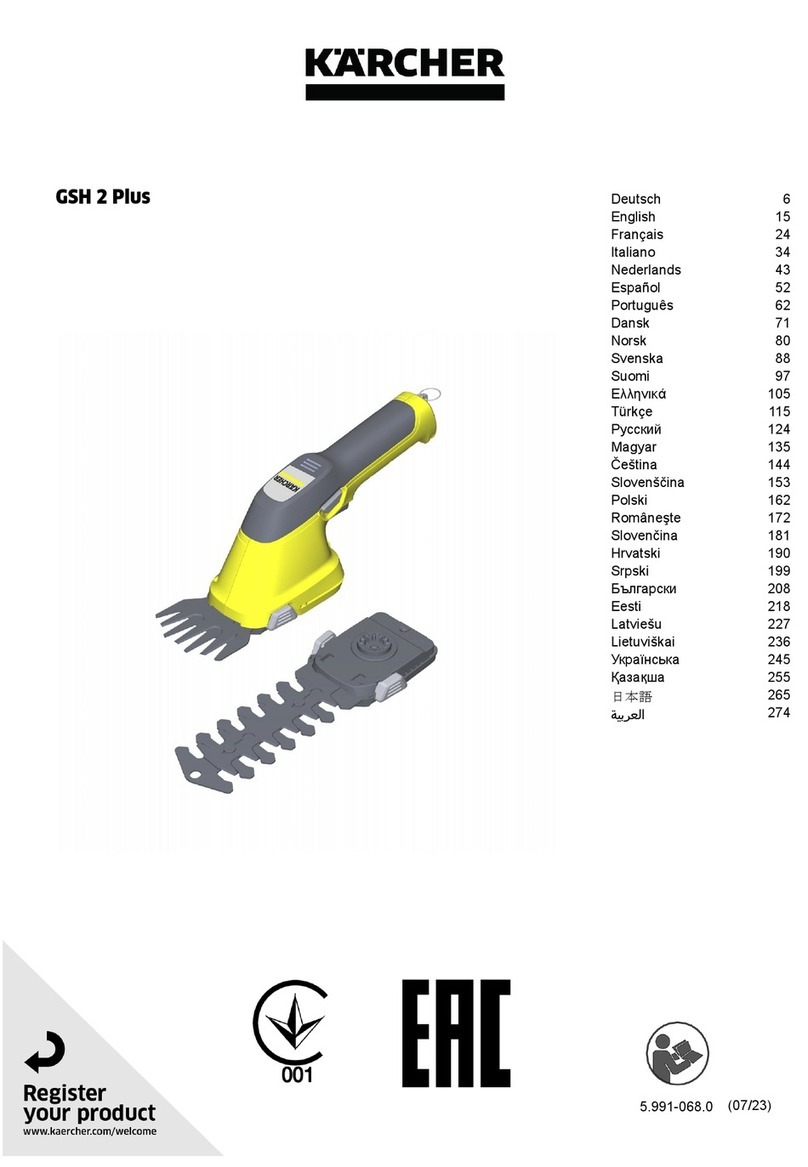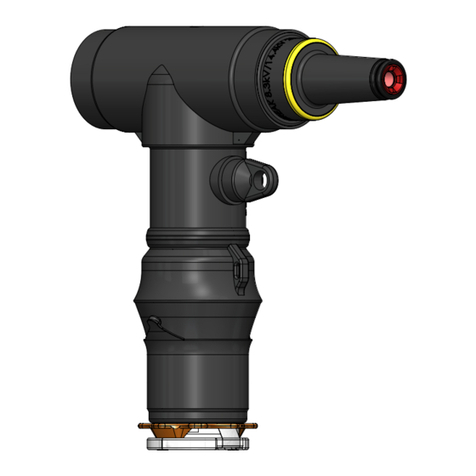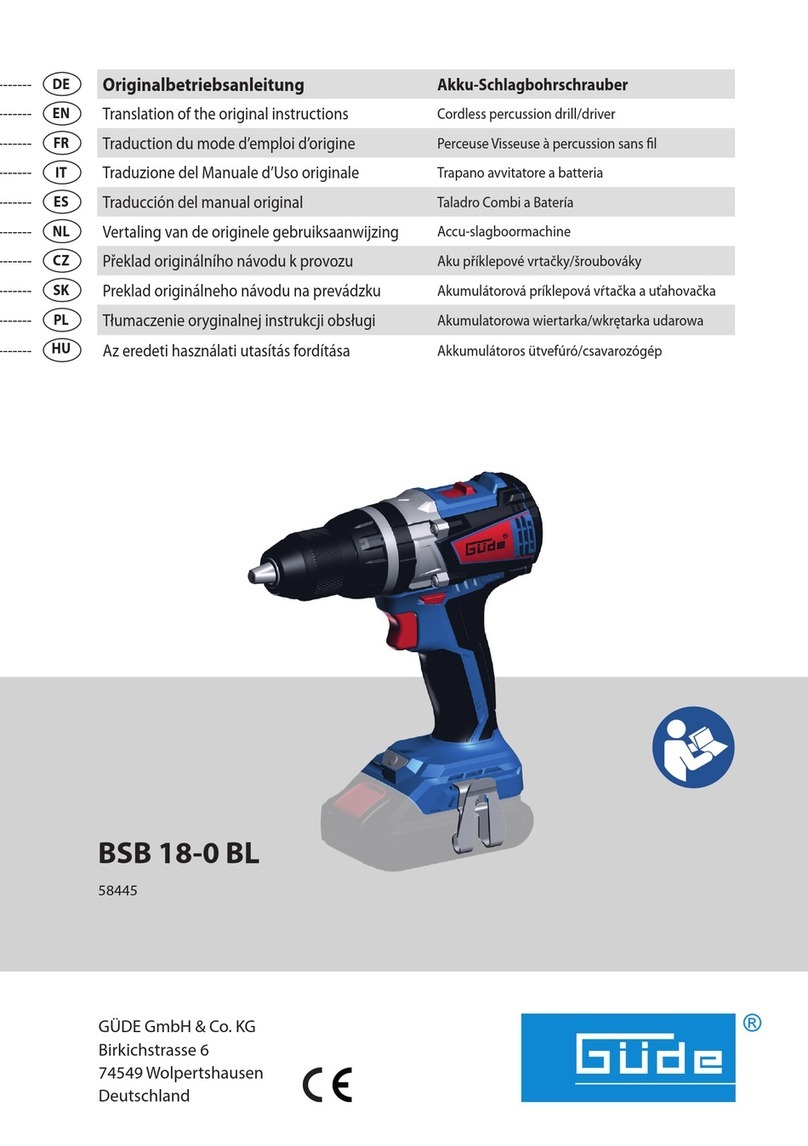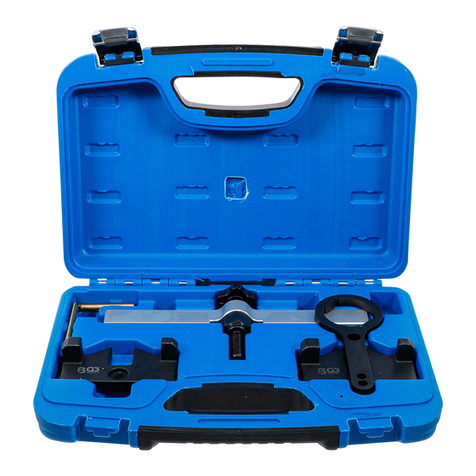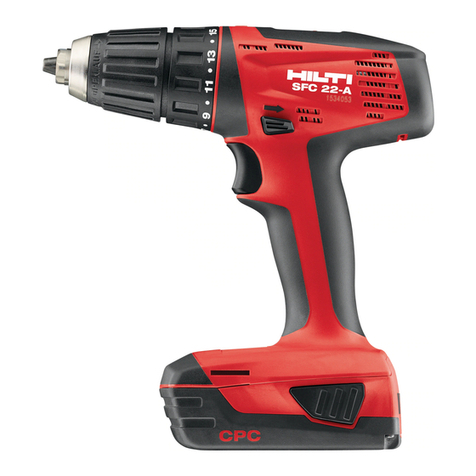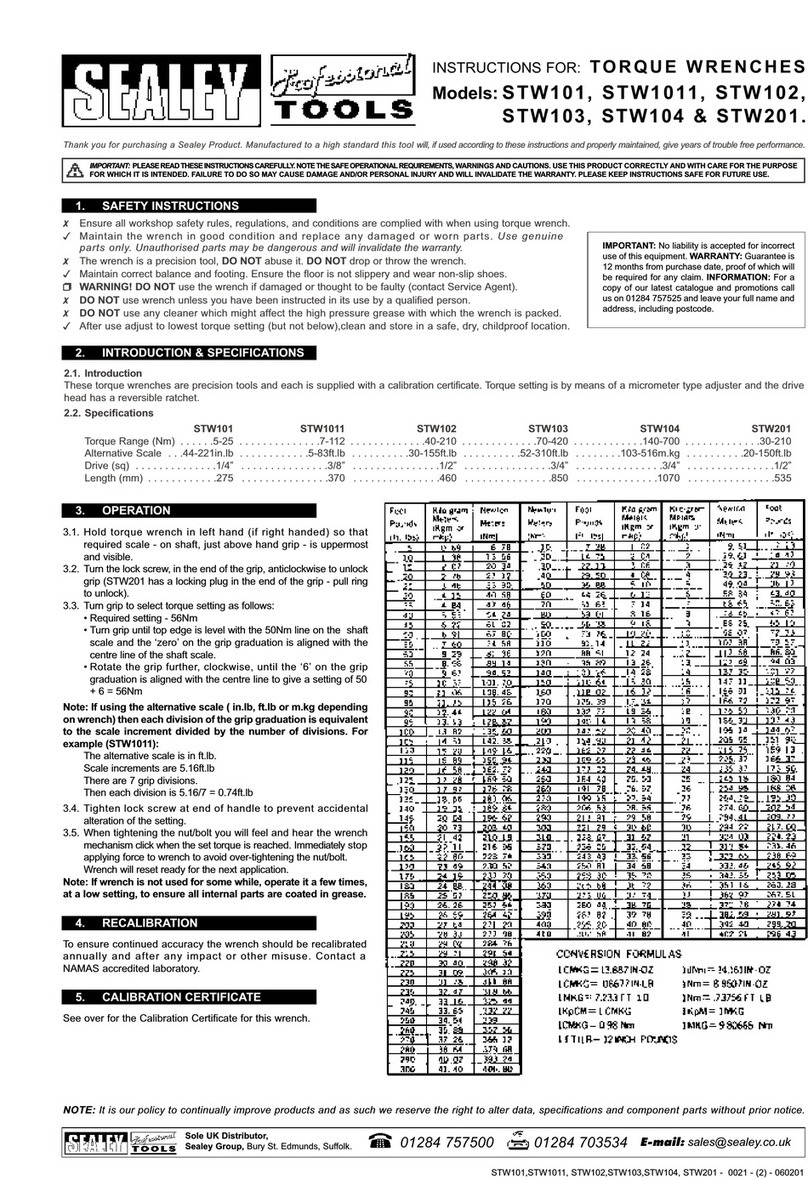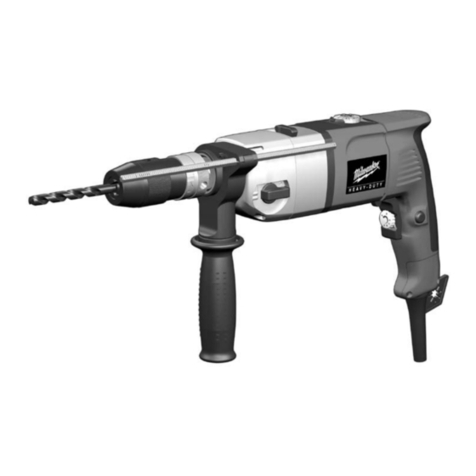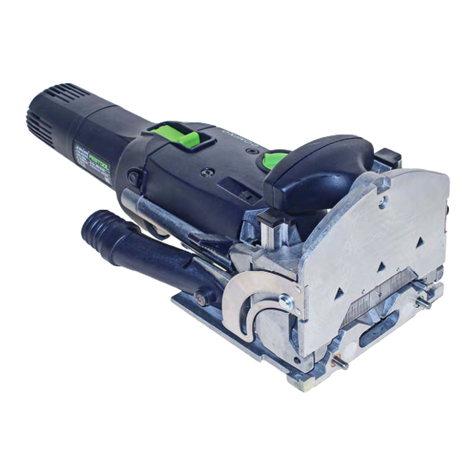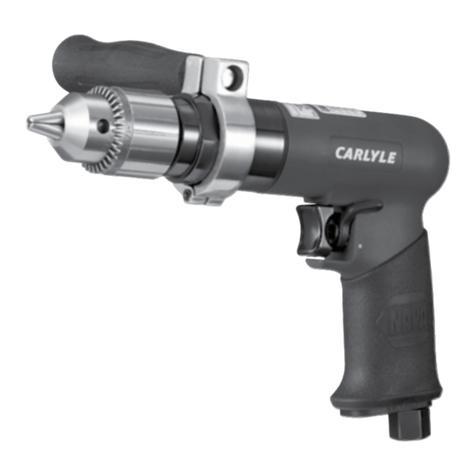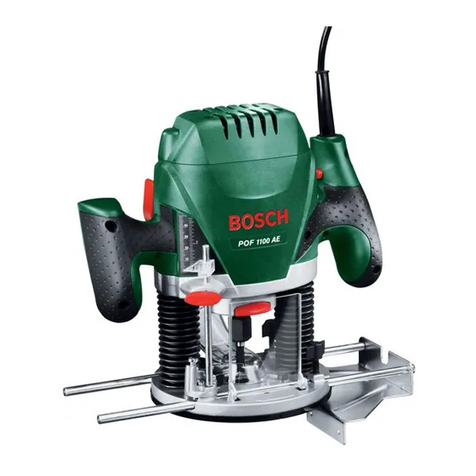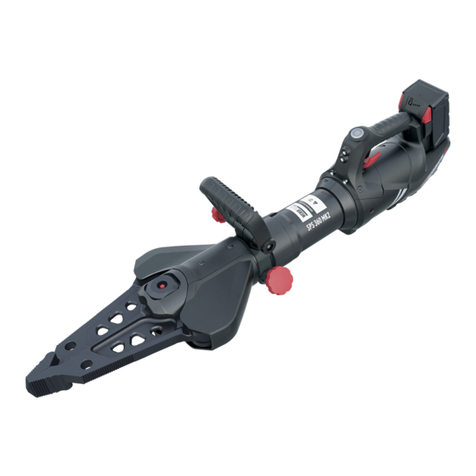Flex FX4111 User manual

OPERATOR’S MANUAL
MANUAL DEL OPERADOR
MANUEL DE L’UTILISATEUR
833-FLEX-496
(833-3539-496)
For English
Version
See page 2
◆
Version
française
Voir page 22
◆
Versión en
español
Ver la página 42
www.Registermyflex.com
Contact Us /
Nous contacter /
Contáctenos
Model:
Modelo:
Modèle:
24V OSCILLATING MULTI-TOOL
OUTIL MULTIFONCTION OSCILLANT DE 24 V
MULTIHERRAMIENTA OSCILANTE DE 24 V
FX4111

-2-
SAFETY SYMBOLS
The purpose of safety symbols is to attract your attention to possible dangers. The safety symbols
and the explanations with them deserve your careful attention and understanding. The symbol
warnings do not, by themselves, eliminate any danger. The instructions and warnings they give are
no substitutes for proper accident prevention measures.
WARNING Be sure to read and understand all safety instructions in this Owner's Manual,
including all safety alert symbols such as “DANGER,” “WARNING,” and
“CAUTION” before using this tool. Failure to follow all instructions listed below may result in electric
shock, re, and/or serious personal injury.
The denitions below describe the level of severity for each signal word. Please read the manual and
pay attention to these symbols.
This is the safety alert symbol. It is used to alert you to potential personal
injury hazards. Obey all safety messages that follow this symbol to avoid
possible injury or death.
DANGER DANGER indicates a hazardous situation which, if not avoided, will result in
death or serious injury.
WARNING WARNING indicates a hazardous situation which, if not avoided, could result
in death or serious injury.
CAUTION CAUTION, used with the safety alert symbol, indicates a hazardous situation
which, if not avoided, will result in minor or moderate injury.
Damage Prevention and Information Messages
These inform the user of important information and/or instructions that could lead to equipment or
other property damage if they are not followed. Each message is preceded by the word “NOTICE”,
as in the example below:
NOTICE: Equipment and/or property damage may result if these instructions are not followed.
WARNING The operation of any power tools can result in foreign
objects being thrown into your eyes, which can result in
severe eye damage. Before beginning power tool operation, always wear
safety goggles or safety glasses with side shields and a full face shield when
needed. We recommend a Wide Vision Safety Mask for use over eyeglasses
or standard safety glasses with side shields. Always use eye protection which
is marked to comply with ANSI Z87.1.

-3-
IMPORTANT SAFETY WARNINGS
WARNING Read all safety warnings, instructions, illustrations and specications
provided with this power tool. Failure to follow all instructions listed below may
result in electric shock, re and/or serious injury.
SAVE ALL WARNINGS AND INSTRUCTIONS FOR FUTURE REFERENCE.
The term “power tool” in the warnings refers to your mains-operated (corded) power tool or battery-
operated (cordless) power tool.
Work area safety
Keep work area clean and well lit. Cluttered
or dark areas invite accidents.
Do not operate power tools in explosive
atmospheres, such as in the presence of
ammable liquids, gases or dust. Power
tools create sparks which may ignite the dust or
fumes.
Keep children and bystanders away while
operating a power tool. Distractions can cause
you to lose control.
Electrical safety
Power tool plugs must match the outlet.
Never modify the plug in any way. Do
not use any adapter plugs with earthed
(grounded) power tools. Unmodied plugs
and matching outlets will reduce risk of electric
shock.
Avoid body contact with earthed or
grounded surfaces, such as pipes, radiators,
ranges and refrigerators. There is an
increased risk of electric shock if your body is
earthed or grounded.
Do not expose power tools to rain or wet
conditions. Water entering a power tool will
increase the risk of electric shock.
Do not abuse the cord. Never use the cord
for carrying, pulling or unplugging the
power tool. Keep cord away from heat, oil,
sharp edges or moving parts. Damaged or
entangled cords increase the risk of electric
shock.
When operating a power tool outdoors, use
an extension cord suitable for outdoor use.
Use of a cord suitable for outdoor use reduces
the risk of electric shock.
If operating a power tool in a damp location
is unavoidable, use a ground fault circuit
interrupter (GFCI) protected supply. Use of a
GFCI reduces the risk of electric shock.
Personal safety
Stay alert, watch what you are doing and
use common sense when operating a power
tool. Do not use a power tool while you are
tired or under the inuence of drugs, alcohol
or medication. A moment of inattention while
operating power tools may result in serious
personal injury.
Use personal protective equipment. Always
wear eye protection. Protective equipment
such as a dust mask, non-skid safety shoes,
hard hat or hearing protection used for
appropriate conditions will reduce personal
injuries.
Prevent unintentional starting. Ensure
the switch is in the off-position before
connecting to power source and/or battery
pack, picking up or carrying the tool.
Carrying power tools with your nger on the
switch or energizing power tools that have the
switch on invites accidents.
Remove any adjusting key or wrench before
turning the power tool on. A wrench or a key
left attached to a rotating part of the power tool
may result in personal injury.
Do not overreach. Keep proper footing and
balance at all times. This enables better control
of the power tool in unexpected situations.
Dress properly. Do not wear loose clothing
or jewelry. Keep your hair, and clothing away
from moving parts. Loose clothes, jewelry or
long hair can be caught in moving parts.
If devices are provided for the connection
of dust extraction and collection facilities,
ensure these are connected and properly
used. Use of dust collection can reduce dust-
related hazards.
Do not let familiarity gained from frequent
use of tools allow you to become
complacent and ignore tool safety
principles. A careless action can cause severe
injury within a fraction of a second.

-4-
Power tool use and care
Do not force the power tool. Use the correct
power tool for your application. The correct
power tool will do the job better and safer at the
rate for which it was designed.
Do not use the power tool if the switch
does not turn it on and off. Any power tool
that cannot be controlled with the switch is
dangerous and must be repaired.
Disconnect the plug from the power
source and/or remove the battery pack,
if detachable, from the power tool before
making any adjustments, changing
accessories, or storing power tools. Such
preventive safety measures reduce the risk of
starting the power tool accidentally.
Store idle power tools out of the reach of
children and do not allow persons unfamiliar
with the power tool or these instructions
to operate the power tool. Power tools are
dangerous in the hands of untrained users.
Maintain power tools and accessories.
Check for misalignment or binding of
moving parts, breakage of parts and any
other condition that may affect the power
tool’s operation. If damaged, have the power
tool repaired before use. Many accidents are
caused by poorly maintained power tools.
Keep cutting tools sharp and clean. Properly
maintained cutting tools with sharp cutting
edges are less likely to bind and are easier to
control.
Use the power tool, accessories and
tool bits etc. in accordance with these
instructions, taking into account the working
conditions and the work to be performed.
Use of the power tool for operations different
from those intended could result in a hazardous
situation.
Keep handles and grasping surfaces dry,
clean and free from oil and grease. Slippery
handles and grasping surfaces do not allow
for safe handling and control of the tool in
unexpected situations.
Battery tool use and care
Recharge only with the charger specied by
the manufacturer. A charger that is suitable for
one type of battery pack may create a risk of re
when used with another battery pack.
Use power tools only with specically
designated battery packs. Use of any other
battery packs may create a risk of injury and
re.
When battery pack is not in use, keep it
away from other metal objects, like paper
clips, coins, keys, nails, screws or other
small metal objects, that can make a
connection from one terminal to another.
Shorting the battery terminals together may
cause burns or a re.
Under abusive conditions, liquid may be
ejected from the battery; avoid contact.
If contact accidentally occurs, ush with
water. If liquid contacts eyes, additionally
seek medical help. Liquid ejected from the
battery may cause irritation or burns.
Do not use a battery pack or tool that is
damaged or modied. Damaged or modied
batteries may exhibit unpredictable behavior
resulting in re, explosion or risk of injury.
Do not expose a battery pack or tool to
re or excessive temperature. Exposure to
re or temperature above 265 °F may cause
explosion.
Follow all charging instructions and do
not charge the battery pack or tool outside
the temperature range specied in the
instructions. Charging improperly or at
temperatures outside the specied range may
damage the battery and increase the risk of re.
Service
Have your power tool serviced by a
qualied repair person using only identical
replacement parts. This will ensure that the
safety of the power tool is maintained.
Never service damaged battery packs.
Service of battery packs should only be
performed by the manufacturer or authorized
service providers.

-5-
SAFETY WARNINGS FOR MULTI TOOL
Hold power tools by insulated gripping
surfaces when performing an operation
where the cutting tool may contact hidden
wiring. Contact with a "live" wire will make
exposed metal parts of the tool "live" could give
the operator an electric shock.
Take protective measures when dust can
develop during working that is harmful to
one’s health, combustible or explosive.
Example: Some dusts are regarded as
carcinogenic. Wear a dust mask and work with
dust/chip extraction when connectable.
Use the machine only for dry sanding.
Penetration of water into the machine increases
the risk of an electric shock.
Secure the workpiece. A workpiece clamped
with clamping devices or in a vice is held more
secure than by hand.
Wear protective gloves when changing
cutting tools. Cutting tools become hot after
prolonged usage.

-6-
SYMBOLS
IMPORTANT: Some of the following symbols may be used on your tool. Please study them and
learn their meaning. Proper interpretation of these symbols will allow you to operate the tool better
and safer.
Symbol Name Designation/Explanation
V Volts Voltage
A Amperes Current
Hz Hertz Frequency (cycles per second)
W Watt Power
kg Kilograms Weight
min Minutes Time
s Seconds Time
Wh Watt-hours Battery capacity
Ah Ampere-hours Battery capacity
ø Diameter Size of drill bits, grinding wheels, etc.
n0No load speed Rotational speed, at no load
n Rated speed Maximum attainable speed
…/min Revolutions or reciprocations per
minute (rpm)
Revolutions, strokes, surface speed, orbits,
etc. per minute
O Off position Zero speed, zero torque...
1,2,3,…
Ⅰ,Ⅱ,Ⅲ, Selector settings Speed, torque, or position settings. Higher
number means greater speed
Innitely variable selector with off Speed is increasing from 0 setting
Arrow Action in the direction of arrow
Alternating current (AC) Type or a characteristic of current
Direct current (DC) Type or a characteristic of current
Alternating or direct current
(AC / DC) Type or a characteristic of current
Class II tool Designates Double Insulated Construction
tools.
Protective earth Grounding terminal
Li-ion RBRC seal Designates Li-ion battery recycling
program
Read the instructions Alerts user to read manual

-7-
Symbol Name Designation/Explanation
Wear eye protection symbol Alerts user to wear eye protection
Always operate with two hands Alerts user to always operate with two
hands
Do not use the guard for cut-off
operations Do not use the guard for cut-off operations
SYMBOLS (CERTIFICATION INFORMATION)
Symbol Designation/Explanation
This symbol designates that this tool is listed by Underwriters Laboratories.
This symbol designates that this component is recognized by Underwriters
Laboratories.
This symbol designates that this tool is listed by Underwriters Laboratories, to
United States and Canadian Standards.
This symbol designates that this tool is listed by the Canadian Standards
Association.
This symbol designates that this tool is listed by the Canadian Standards
Association, to United States and Canadian Standards.
This symbol designates that this tool is listed by the Intertek Testing Services,
to United States and Canadian Standards.

-8-
FUNCTIONAL DESCRIPTIONS AND SPECIFICATIONS
Multi Tool
Fig. 1
On/Off Switch
Accessory
Holder
Clamping
Jaws
Plunge-cut blade
(wood & metal)
Plunge-cut blade
(wood)
Attachment
Collar
Edge Guide
Depth Gauge
LED Work
Light
Neck
Accessory
Release Lever
Speed Control Panel
Model No. FX4111
Rated Voltage 24 V d.c.
No Load Speed 10000 – 20000 /min (oscillations per minute)
Accessory Interface Starlock
Recommended operating temperature -4 – 104°F (-20 – 40℃)
Recommended storage temperature < 122℉ (< 50℃)

-9-
ASSEMBLY
WARNING Detach the battery pack
from the tool before
performing any assembly, adjustments, or
changing accessories. Such preventive safety
measures reduce the risk of starting the tool
accidentally.
TO ATTACH/DETACH BATTERY PACK (FIG. 2)
To attach the battery pack:
Align the raised rib on the battery pack with the
grooves in the tool, and then slide the battery
pack onto the tool.
NOTICE: When placing the battery pack
onto the tool, be sure that the raised rib
on the battery pack aligns with the groove
inside the tool and that the latches snap into
place properly. Improper attachment of the
battery pack can cause damage to internal
components.
To detach the battery pack:
Depress the battery-release button located
on the front of the battery pack, to release the
battery pack. Pull the battery pack out and
remove it from the tool.
INSTALLING AND REMOVING ACCESSORIES
(FIG. 3 – 7)
WARNING Only use FLEX
accessories rated 20000
OPM or greater. Using accessories not
designed for this tool may result in serious
personal injury and property damage.
To install the accessory
Make sure that the On/Off switch is in the OFF
position and detach the battery pack from the
tool.
a. Turn the accessory release lever on the head
of the tool counterclockwise past the rst
“click” which signals that the lever has been
engaged.
Fig. 2
Attach
Detach Battery-Release
Button
Fig. 3
Original Position
Accessory
Release
Lever

-10-
b. Continue to turn the lever counterclockwise
(this time you will feel some resistance) as
far as it will go, which will be indicated by
the second "click". The clamping jaws of the
accessory holder are now closed and the new
accessory can be installed (Fig. 4).
Place the accessory on a at surface. Grasp
the machine body with one hand and the
accessory release lever with another hand.
Align the star-shaped interfaces of the
accessory holder with the accessory
(Fig. 5 & 6).
Note that the accessory can be positioned at
various angles if desired (Fig. 5).
c. Turn the accessory release lever clockwise
to return it to its original position (Fig. 3). The
clamping jaws of the accessory holder will
open and lock the accessory in place.
WARNING Do not attach the
accessories in such a way
that they face backward. Operation in this
position may cause serious injury (Fig. 7).
To remove the accessory
Make sure that the On/Off switch is in the OFF
position and detach the battery pack from the
tool.
a. Turn the accessory release lever on the head
of the tool counterclockwise past the rst
"click" which signals that the lever has been
engaged (Fig. 4).
b. Continue to turn the lever counterclockwise
(this time you will feel some resistance) as
far as it will go, which will be indicated by the
second "click" (Fig. 4). The clamping jaws
of the accessory holder will close and the
accessory will fall out of the accessory holder.
Fig. 7
Fig. 5
Fig. 6
Fig. 4
Accessory
Release Lever

-11-
INSTALLING AND REMOVING THE
ATTACHMENT COLLAR (FIG. 8 & 9)
Loosen the collar locking bolt by using the
hexagon rod of the depth gauge or guide fence
and align the four positioning tabs (Fig. 8a) of
the clamp assembly with the grooves on the
neck. Then install the clamp assembly on the
tool, adjust it to the desired angle and securely
tighten the collar locking bolt (Fig. 8b).
Loosen the locking knob to insert the depth
gauge or edge guide and then tighten the
locking knob (Fig. 9).
Fig. 8a
Positioning Tabs
Positioning Tabs
Fig. 8b Attachment Collar
Neck
Collar
Locking Bolt
Fig. 9
Depth Gauge
Locking Knob

-12-
ADJUSTMENTS
SETTING THE SPEED (FIG. 10)
There are ve speed levels that can be changed
using the speed setting buttons. Press the "︿"
button to increase the speed. Press "﹀" button
to decrease the speed. The LED lights above
the numbers indicate the current speed level.
The speed level can be set before the tool
is turned on or when the tool is already in
operation.
The approximate OPM (oscillations per minute)
are:
Speed Level /min (OPM)
1 10000
2 12000
3 15000
4 18000
5 20000
If the tool is OFF:
a. Press one of the speed setting buttons. This
will “wake up” the control panel and the LED
lights will indicate the current speed level.
b. Change the speed level by pressing the " ︿"
or " ﹀" buttons.
c. After ~15 seconds of inactivity the LED lights
on the control panel will turn off. The memory
function will remember and revert to the last
active speed level the next time one of the
speed setting buttons is pressed or the tool is
turned on.
If the tool is already ON:
a. Change the speed level by pressing the " ︿"
or " ﹀" buttons. You will feel and hear the
speed change and the LED lights will indicate
the current speed level.
b. After you turn the tool off, the memory function
will remember and revert to the last active
speed level the next time the tool is turned on.
WARNING Adjust the speed only when
the tool is off or when the
tool is running at no-load. Make sure to hold
the tool rmly within the soft grip area with one
hand, keeping the tool under control, when
adjusting the speed when running at no-load.
Failure to obey this caution could cause loss of
control and result in serious personal damage.
Fig. 10
Speed Setting Buttons
Speed Control Panel

-13-
OPERATING INSTRUCTIONS
WARNING To reduce the risk of re,
personal injury, and
product damage due to a short circuit, never
immerse your tool, battery pack or charger
in uid or allow a uid to ow inside them.
Corrosive or conductive uids, such as
seawater, certain industrial chemicals, and
bleach or bleach-containing products, etc. can
cause a short circuit.
WARNING If any parts are damaged
or missing, do not operate
this product until the parts are replaced. Use
of this product with damaged or missing parts
could result in serious personal injury.
WARNING Do not attempt to modify
this tool or create
accessories not recommended for use with
this tool. Any such alteration or modication is
misuse and could result in a hazardous
condition leading to possible serious injury.
WARNING To prevent accidental
starting that could cause
serious personal injury, always remove the
battery pack from the tool when assembling
parts.
WARNING Always wear safety goggles
or safety glasses with side
shields during power tool operation. If the
operation is dusty, also wear a dust mask.
WARNING Wear protective gloves.
This multi tool must be used only with the battery packs and chargers listed below:
Battery Pack Charger
2.5Ah 5Ah 8Ah 12Ah
FLEX FX0111 FLEX FX0121 FLEX FX0221 FLEX FX0231 FLEX FX0411 FLEX FX0421
NOTICE: Please refer to the battery pack and charger manuals for detailed operating
information.
ON/OFF SWITCH (FIG. 11)
Hold the tool rmly within the soft grip area and
keep your hands away from the blade.
To turn the multi-tool on, push the On/Off switch
forward.
To turn it off, move the On/Off switch toward the
rear.
WARNING After tool use, detach the
battery pack to prevent
accidental starts and possible injury.
Fig. 11
Turn on
Turn off

-14-
LED WORK LIGHT (FIG. 12)
Your tool is equipped with an LED work light.
This work light provides additional light on the
surface of the workpiece for operation in lower-
light areas.
The work light will automatically turn on
when the tool is turned on and will turn off
approximately 10 seconds after the tool is
turned off.
The work light will rapidly ash when the tool
and/or battery pack becomes overloaded or too
hot.
The internal sensors will turn the tool off if the
tool and/or battery pack are overloaded. Rest
the tool for a while or place the tool and battery
pack separately under air ow to cool them.
The work light will ash more slowly to indicate
that the battery is at low-battery capacity.
Recharge the battery pack.
If the work light fails to light up when you switch
the tool on, or it turns off suddenly during
operation, please contact customer service or
an authorized service center for assistance.
Fig. 12
LED Work light

-15-
USING ACCESSORIES
WARNING Use sharp, undamaged
accessories only.
Deformed or blunt or otherwise damaged
accessories can break causing injuries or
property damage.
WARNING Do not attach the
accessories in such a way
that they face backward. Operation in this
position may cause serious injury.
FLEX Multi Tool is designed to tackle a variety
of tasks. A range of available accessories easily
turn the tool into a saw or into a sander, into a
scraper or a grout remover.
NOTE: Not all accessories are included with
your tool and should be purchased separately.
Accessories with STARLOCK interface from
other manufacturers should be compatible with
this tool.
Accessory Application
Included in Accessory Set
FA401001
Cutting
1-1/4"
Bi-Metal
plunge cut
blade
For deep plunge cuts
in wood and plastics;
for fast separating cuts
of non-ferrous metal
proles, non-hardened
nails, screws, and steel
proles with smaller
dimensions.
FA401002 1-1/4" HCS
plunge cut
blade with
curved
tech
For fast, deep
separating and plunge
cuts in wood and
plastics.
FA401003
3/8"
Bi-Metal
plunge cut
blade
For small separating
and plunge cuts in
softwood, soft plastics,
drywall, thin-walled
aluminum and non-
ferrous metal proles
and sheets, non-
hardened nails and
screws.
FA402001 3-1/2"
Titanium-
coated
segmented
saw blade
For separating and
plunge cuts in wood,
wood with nails, drywall,
PVC, nails and screws.
FA403001
Scraping 2" Rigid
scraper
For scraping residues
of mortar, concrete, tile
and carpet adhesives
from hard surfaces.
FAM40101-3
3pc Plunge
Cutting Blade
Set
FAM40101-5
5pc Trimming
Project Set
FAM40103-41
41pc Sanding
Set
FAM40102-5
5pc Tiling
Project Set

-16-
Accessory Application
Included in Accessory Set
FA404001
Grout &
Abrasive
3-1/2"
carbide
grit grout
grinding
blade
For removing grouting
joints between wall tiles;
for repair work, cutting
openings in tiles, drywall
or plastic.
FA404002 3" carbide
grit delta
rasp
For rasping and sanding
on hard surfaces; for
removing mortar or tile
adhesive.
FA405001
Sanding
3-5/8"
sanding
pad
For sanding surfaces
close to edges, corners
or hard to reach areas.
Depends on the sanding
sheet.
FA406001 3-5/8"
sanding
sheet 60
grit
For coarse sanding of
all wooden materials
and metal materials,
berglass and plastics.
FA406002 3-5/8"
sanding
sheet 120
grit
For face sanding
and smoothing small
irregularities.
FA406003 3-5/8"
sanding
sheet 180
grit
For nish and ne
sanding.
FA406004 3-5/8"
sanding
sheet 240
grit
For nish and ne
sanding.
NOTE: Visit expowertools.com website for the latest available accessories and accessory sets.
FAM40101-3
3pc Plunge
Cutting Blade
Set
FAM40101-5
5pc Trimming
Project Set
FAM40103-41
41pc Sanding
Set
FAM40102-5
5pc Tiling
Project Set

-17-
CUTTING
The plunge saw blades are ideal for making
precise cuts in tight areas, close to edges or
ush to a surface. Set the tool to a medium
speed (3) for greater control when making the
initial plunge. After making the initial cut, the
speed can be increased for faster cutting.
When ush cutting, do not force the tool.
A strong vibration during the plunge cut is
an indicator that you are applying too much
pressure – let the speed of the tool do the work.
GROUT REMOVAL
Before starting, measure the grout line width
to pick the appropriate blade. Set the tool to a
medium to high speed (3 – 5). To remove the
grout, use a back-and-forth motion, making
several passes along the grout line. Do your
best to keep the grout blade aligned with the
grout line and do not apply too much side
pressure on the grout blade during the process.
Use the carbide grit line on the blade as an
indicator to monitor the plunge depth. Do not
plunge beyond the carbide grit line to avoid
damage to the backer board.
SCRAPING
Set the tool to a low to medium speed (1 – 3).
Turn the tool on and place the scraper on the
area where material is to be removed. Begin
with light pressure. Excessive pressure can
damage the background surface.
SANDING
After turning the tool on, allow it to reach its full
speed before contacting the workpiece with the
tool and remove it from the workpiece before
switching the tool off.
Sand with a continuous motion and light
pressure. Do not apply excessive pressure –
let the speed of the tool do the work. Work
with the complete surface of the sanding pad,
not only with the tip. The sanding pad should
occasionally be rotated to distribute the wear on
the sanding sheet and backing pad surface.

-18-
USING ATTACHMENTS
WARNING Detach the battery pack
from the tool before
performing any assembly, adjustments, or
changing accessories. Such preventive safety
measures reduce the risk of starting the tool
accidentally.
Your tool is shipped with the attachment collar
that accepts the depth gauge or the edge
guide. To install the attachment collar, follow
instructions in the chapter "INSTALLING AND
REMOVING THE ATTACHMENT COLLAR"
earlier in this manual.
DEPTH GAUGE (FIG. 13)
The depth gauge allows you to control the depth
of the plunge cuts. This is especially helpful
when plunge cutting an opening in drywall
where you don’t want to accidentally damage
objects or surfaces behind the drywall.
To use the depth gauge:
a. Insert it into the attachment collar and set the
distance "X" between the tip of the plunge
blade and the tip of the depth gauge.
b. If the blade is installed at an angle, loosen the
collar locking bolt and rotate the collar around
the neck of the tool until the depth gauge is
parallel to the blade. Tighten the collar locking
bolt.
c. The bent tip of the depth gauge can be
positioned either above the blade or to the
side based on your preference and situation.
d. Tighten the locking knob. This will be your
depth of cut.
X
Fig. 13
Depth
Gauge
Locking
Knob
Collar
Collar
Locking
Bolt

-19-
EDGE GUIDE (FIG. 14 & 15)
The edge guide is used to make thru cuts
parallel to a straight edge or a piece of plywood
temporarily secured to the workpiece with
screws or clamps. Make sure that the clamps
do not interfere with the free movement of the
tool throughout the entire length of the cut.
To use the edge guide:
a. Insert it into the attachment collar and position
it at an angle to the blade (Fig. 14).
b. Loosen the collar locking bolt and rotate the
collar around the neck to make sure that
blade is fully engaged into the workpiece
throughout the complete stroke (oscillation) of
the blade. If either edge of the blade travels
outside of the workpiece, the tool may
jump causing loss of control and damage
to the workpiece. Tighten the collar locking
bolt (Fig. 14).
c. Press the right edge of the edge guide against
the straight edge and start the tool. Continue
cutting along the straight edge (Fig. 14).
The edge guide can also function as the depth
gauge when using a segment blade
(not included with the tool).
a. With the segment blade installed, move the
edge guide do desired distance "X" away from
the tips of the segment blade teeth (Fig. 15).
b. Tighten the locking knob (Fig. 15).
X
Fig. 15
Locking Knob
Segment
Blade
Collar
Locking Bolt Edge guide
Fig. 14
Clamp
Locking Knob
Straight Edge
Collar
Locking
Bolt
Desired line
of cut
Edge Guide

-20-
MAINTENANCE
WARNING To avoid serious personal
injury, always remove the
battery pack from the tool when cleaning or
performing any maintenance.
SERVICE
WARNING Preventive maintenance
performed by
unauthorized personnel may result in
misplacing of internal wires and
components which could cause a serious
hazard. We recommend that all tool service be
performed by a FLEX Factory Service Center or
Authorized FLEX Service Station.
GENERAL MAINTENANCE
WARNING When servicing, use only
identical replacement
parts. Use of any other parts could create a
hazard or cause product damage. Periodically
inspect the entire product for damaged, missing,
or loose parts such as screws, nuts, bolts, caps,
etc. Tighten securely all fasteners and caps and
do not operate this product until all missing or
damaged parts are replaced. Please contact
customer service or an authorized service
center for assistance.
CLEANING
WARNING The tool may be cleaned
most effectively with
compressed dry air. Always wear safety
goggles when cleaning tools with
compressed air. Ventilation openings and
switch levers must be kept clean and free of
foreign matter. Do not attempt to clean by
inserting pointed objects through openings.
WARNING Certain cleaning agents
and solvents damage
plastic parts. Some of these are: gasoline,
carbon tetrachloride, chlorinated cleaning
solvents, ammonia and household detergents
that contain ammonia.
STORAGE
Store the tool indoors in a place that is
inaccessible to children. Keep away from
corrosive agents.
Table of contents
Languages:
Other Flex Power Tools manuals
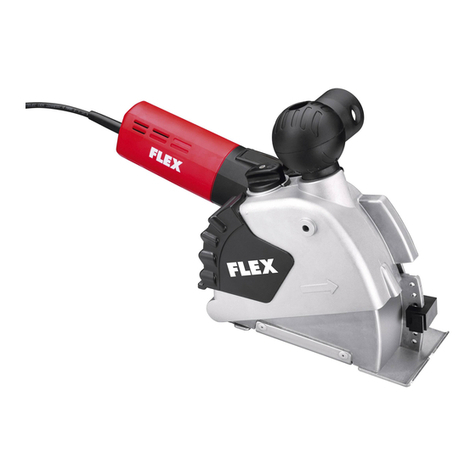
Flex
Flex MS 1706 FR User manual
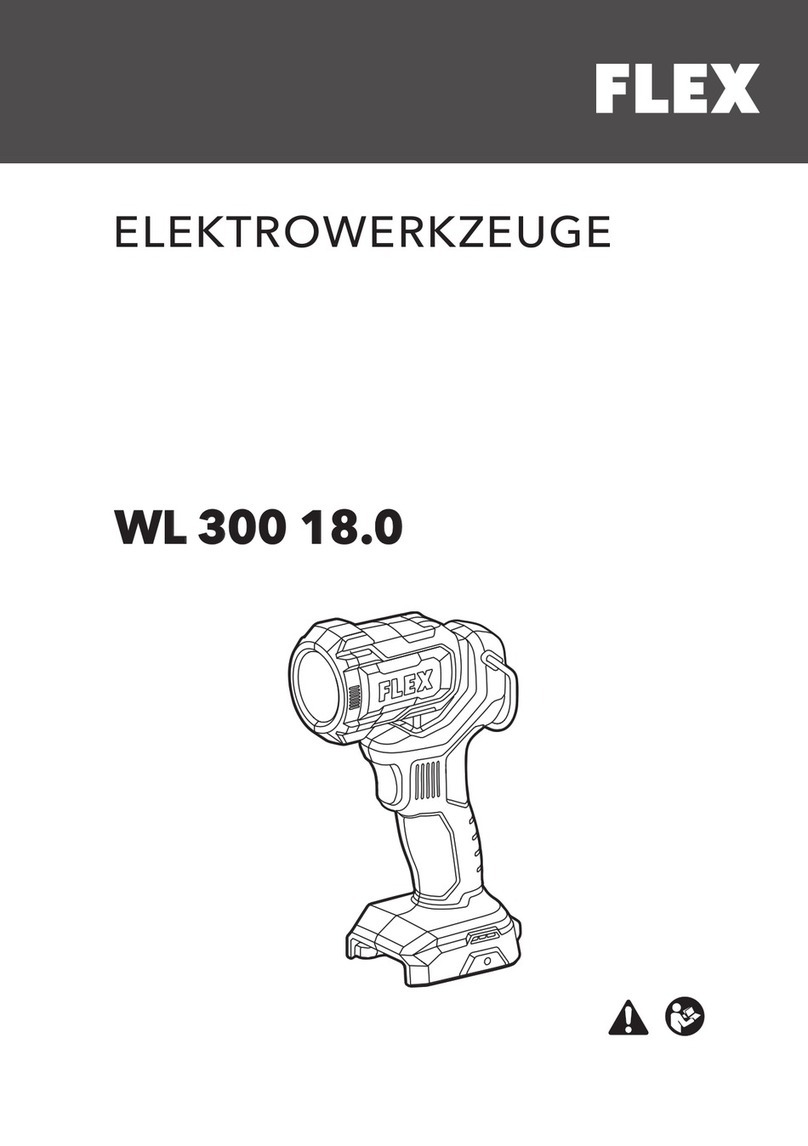
Flex
Flex WL 300 18.0 User manual
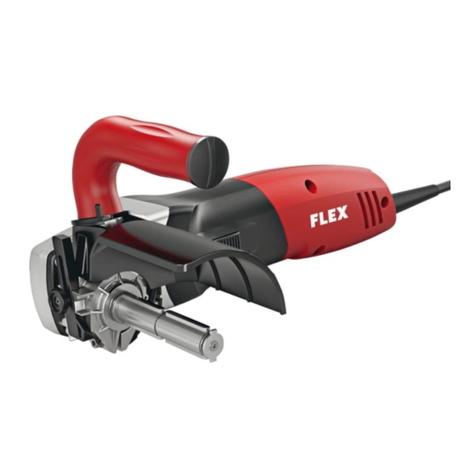
Flex
Flex TRINOXFLEX BME 14-3 L User manual
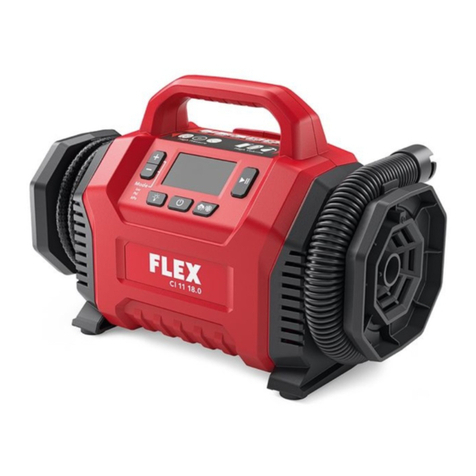
Flex
Flex CI 11 18.0 User manual

Flex
Flex JS 18.0-EC User manual

Flex
Flex Giraffemobile GM 340 User manual

Flex
Flex SD 5-300 4.0 User manual
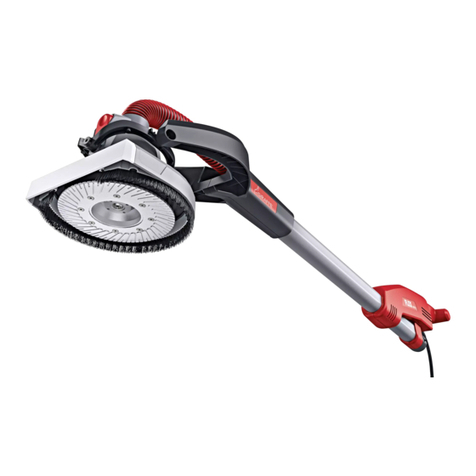
Flex
Flex GDE 10 User manual
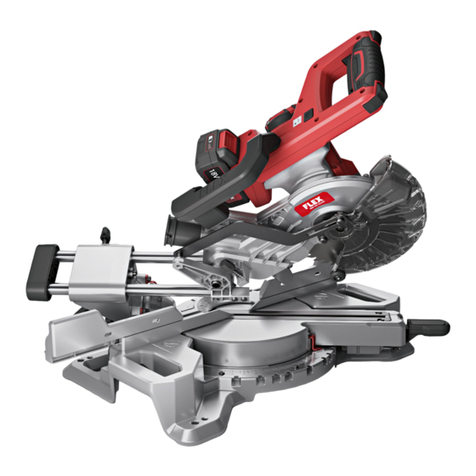
Flex
Flex SMS 190 18.0-EC User manual
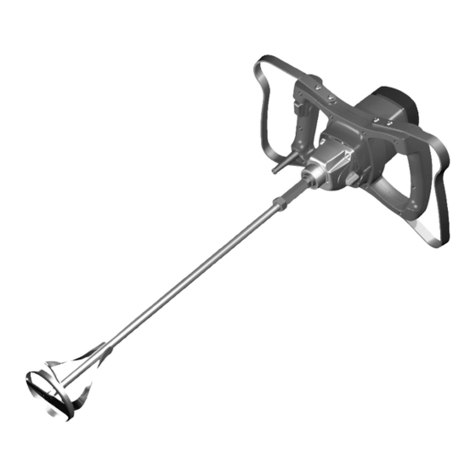
Flex
Flex R 500FR User manual
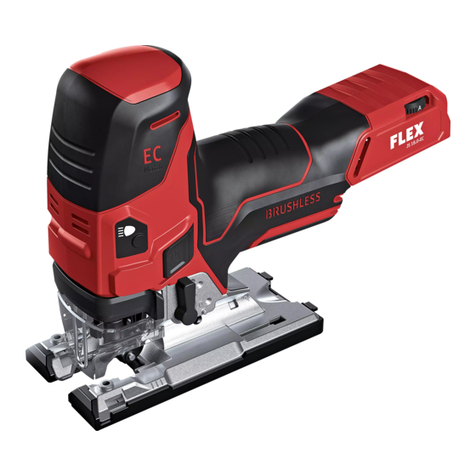
Flex
Flex JS 18.0-EC User manual
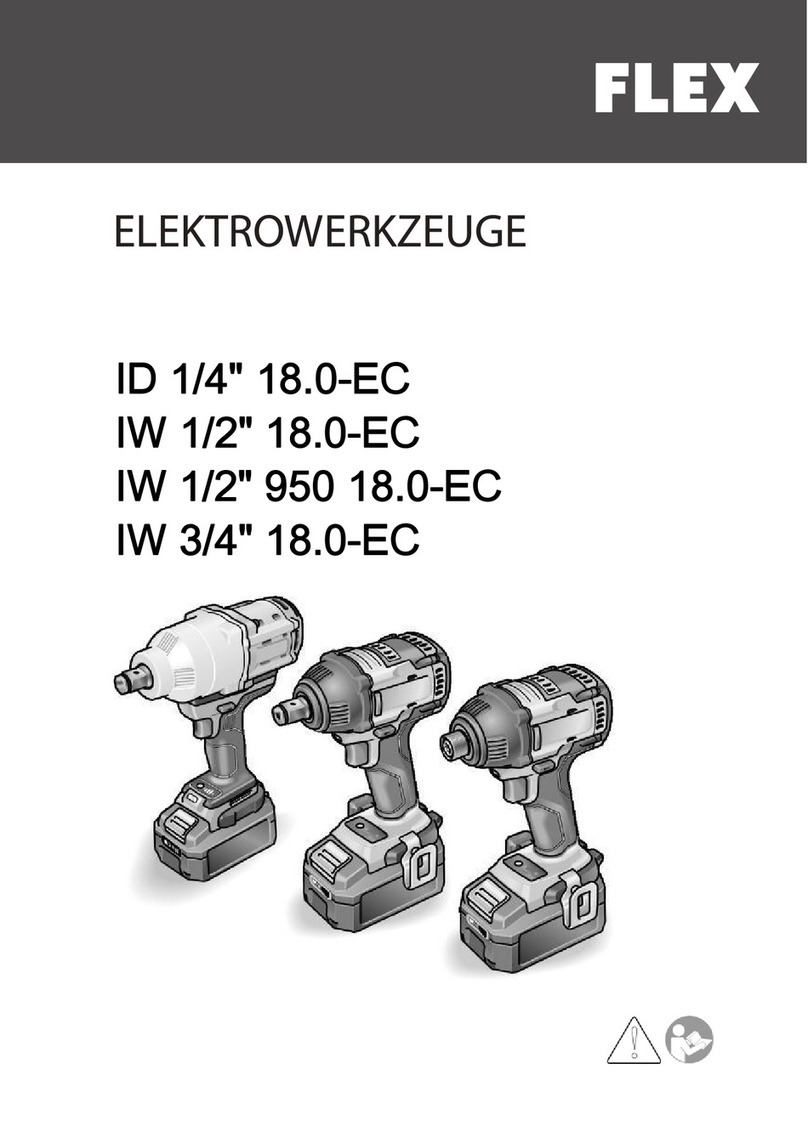
Flex
Flex ID 1/4" 18.0-EC User manual
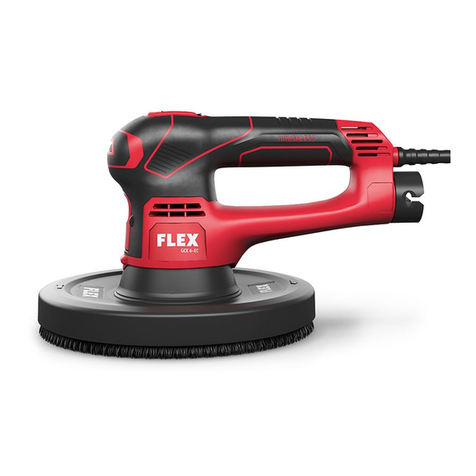
Flex
Flex GCE 6-EC User manual
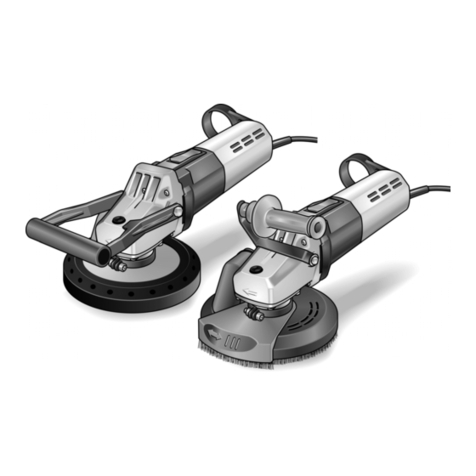
Flex
Flex LDC 1709 FR User manual
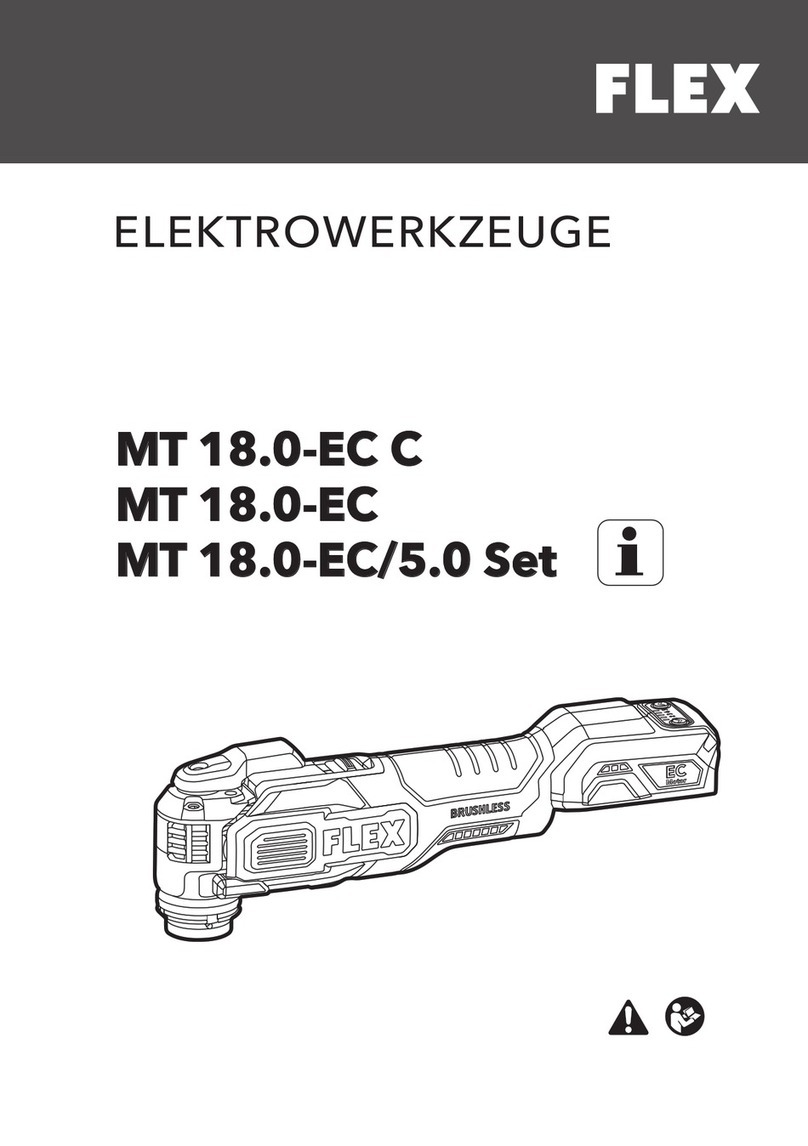
Flex
Flex MT 18.0-EC C User manual

Flex
Flex Ali 10.8 B User manual

Flex
Flex IW 1/2" 750 18.0-EC User manual
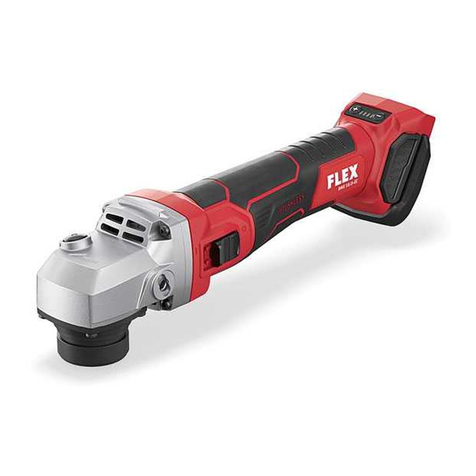
Flex
Flex TRINOXFLEX BME 18.0-EC + LK 152 User manual
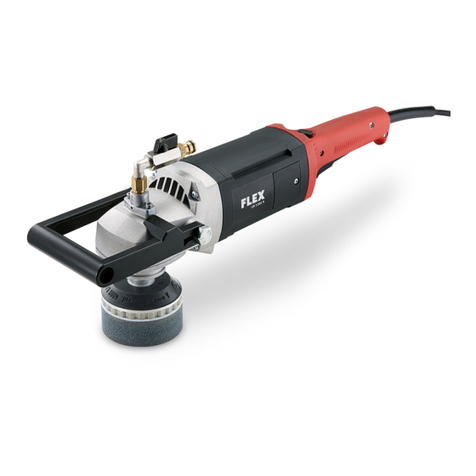
Flex
Flex LW 1202 User manual

Flex
Flex MS 1706 FR User manual
